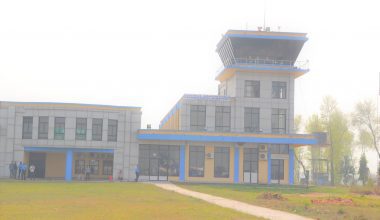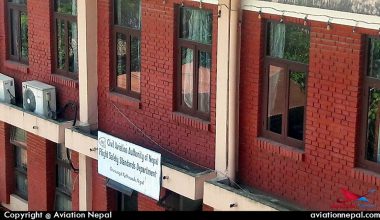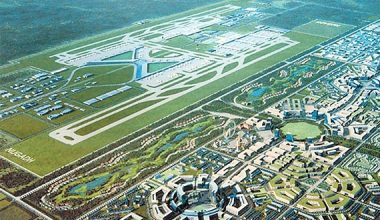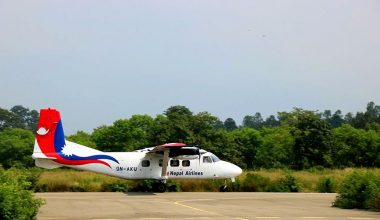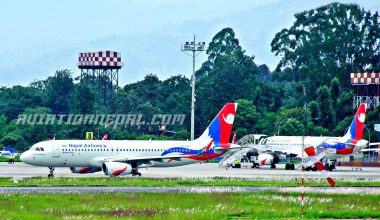Two new parking ramps will be added in Tribhuvan International Airport (TIA) within 5 months to add additional parking bay to aircraft.
According to Ministry of Culture, Tourism and Civil Aviation (MoCTCA), the construction of new parking bay will be started as TIA has been facing many hindrances following the increase in flight frequencies and airlines adding new aircraft in its fleet.
Sanjeev Gautam, Director General of Civil Aviation Authority of Nepal (CAAN) stated that “Parking ramp” and “Remote parking ramp” will be constructed at the cost of more than NRs 1 Arab from the Airport Development Fund (ADF). It is estimated to cost NRs 47 Crores for remote parking ramp construction at east side and Rs 59 Crores for parking ramp at southern side of airport.
According to Gautam, 2 Airbus and 3 ATR can be parked at the remote parking bay whereas 2 wide body and 3 small ATRs can be parked at parking bay at southern side. Currently, TIA lack adequate parking bay which can provide space for wide bodies.
According to the source, adding 2 new parking ramps will make airline companies and airport easier for carrying out their operation.
Currently, only 3 wide bodies and 6 narrow bodies can be parked at the international terminal whereas after completion of new parking bay, 13 international aircraft including 5 wide body aircraft can be parked at once.
Raj Kumar Chhetri, General Manager of TIA stated that remote parking bay will be completed by February and parking bay at south side will be completed by next April. He also informed that the construction of remote parking bay has paced up. Accordingly, the work of parking bay at southern side will be started shortly.
Remote parking bay is an isolated and alternative parking bay constructed far from the main parking bay of the airport and used to avoid physical damages and human threats involved in an aircraft. Any aircraft that is suspected to be in threat of bomb blast or terrorist or hijacking activities will be preceded to park in the remote bay. It will provide crucial aid avoiding flight disruption by providing isolated space to the aircraft which needs to be parked for long time or due to abnormal reasons.

